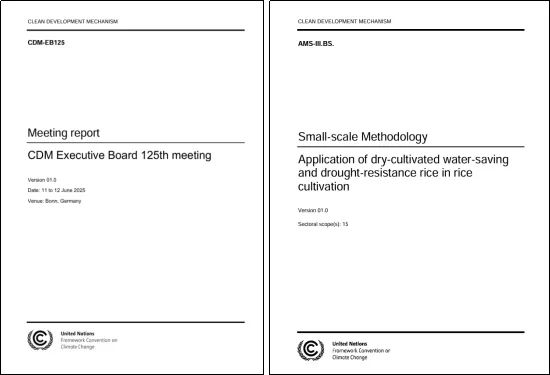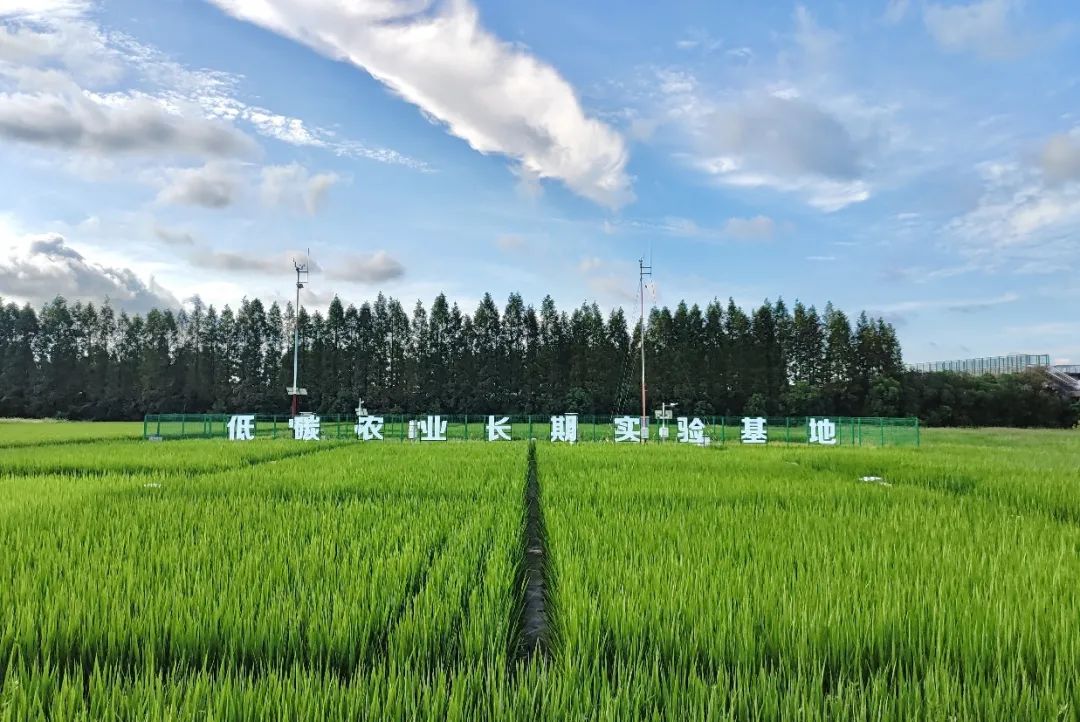Shanghai Solution, Serving the World: SAAS Leads the Development of a Rice Field Methane Reduction Methodology Adopted by UN Agencies
Recently, after a rigorous two-and-a-half-year review process (including four rounds of international expert panel discussions and revisions, and three submissions for review by the Executive Board), the rice field methane reduction methodology "Application of Dry-Cultivated Water-Saving and Drought-Resistant Rice in Rice Cultivation", pioneered by SAAS, was successfully approved at the 125th meeting of the Clean Development Mechanism (CDM) Executive Board under the United Nations Framework Convention on Climate Change (UNFCCC). It has been officially adopted as the 103rd small-scale emission reduction methodology (No.: AMS-III.BS.) under the CDM framework and took immediate effect. This marks the second rice field methane reduction methodology adopted by the CDM in 14 years since Germany’s Bayer submitted the first one in 2011, and more importantly, it is China’s first independently developed and fully IP-owned rice field methane reduction CDM methodology. It demonstrates that SAAS has reached world-leading standards in agricultural greenhouse gas (GHG) emission reduction methodology research and has mastered the key to formulating core international rules and standards in this field.

Tackling Global Methane Emissions: Solving the World's Rice Field Challenge
Methane is the second-largest greenhouse gas after carbon dioxide, with a global warming potential (GWP) 28 times higher than CO₂ over 100 years and up to 81 times higher over 20 years, though it remains in the atmosphere for a relatively short time (~12 years). This means controlling methane emissions—a potent but short-lived greenhouse gas—is one of the most effective near-term strategies to slow global warming.At the 26th UN Climate Change Conference (COP26) in 2021, global methane reduction became a critical component of international climate action.
Agriculture is a major source of global GHG emissions, with rice cultivation contributing ~30% of agricultural methane emissions, releasing ~25 million tons of methane annually. Moreover, rice field methane reduction is a key part of China’s green and low-carbon agricultural transformation. In May 2022, the Ministry of Agriculture and Rural Affairs (MARA) and the National Development and Reform Commission (NDRC) jointly issued the "Agricultural Emission Reduction and Carbon Sequestration Implementation Plan", listing "Rice Field Methane Reduction Action" as the top priority among ten major initiatives. In November 2023, the Ministry of Ecology and Environment (MEE) and 10 other departments released the "Methane Emission Control Action Plan", explicitly calling for progressive rice field methane emission control.
However, global rice field methane reduction faces multiple challenges: Complex emission mechanisms and high spatial-temporal variability, Balancing food security with emission reduction, Disconnect between technology R&D and practical application, and Lack of monitoring systems and internationally recognized methodologies.
A Decade of Innovation: Breakthroughs by SAAS Low-Carbon Agriculture Team
To address this global challenge, Dr. Zhou Sheng’s low-carbon agriculture team at Eco-environment Protection Research Institute SAAS, led by a forward-thinking research strategy, has conducted long-term research in this field, benchmarking against world-renowned long-term experimental stations such as the Rothamsted Research (UK), Illinois Agricultural Experiment Station (USA), and Ibaraki Agricultural Experiment Station (Japan). Since 2012, relying on scientific research platforms such as the Shanghai Low-Carbon Agriculture Engineering Technology Research Center, they have established a long-term experimental base for low-carbon agriculture. For more than ten years, they have been continuously conducting long-term monitoring of greenhouse gas emissions and soil carbon sinks in paddy field systems under more than ten types of planting and management modes. They have gradually accumulated hundreds of thousands of various observational data. They have systematically carried out the development of low-carbon agricultural technologies in all aspects, including the screening of high-yielding and low-drainage rice varieties, optimization of water management, precise allocation of fertilizers, comprehensive utilization of straw, and innovation of crop rotation models. They have also deeply explored the mechanisms of emission reduction and carbon sequestration.
In addition, they have been developing methodologies and formulating standards simultaneously. They have developed a series of scientific research results for emission reduction and carbon sequestration in paddy field systems, including methane reduction technology in paddy fields, nitrous oxide inhibition technology in dry land, soil carbon sequestration technology in farmland, and straw carbonization and returning to the field for emission reduction and carbon sink increase technology.The accumulation of these long-term observational data and the development of application technologies provide a scientific basis for global sustainable agricultural development, combating climate change, and ensuring food security.

Aligning with the Paris Agreement's Temperature Control Goals: The Strategic Fit of SAAS Achievements
The international carbon market is an indispensable mechanism for achieving the Paris Agreement's global 1.5°C temperature control target. As a mature and widely recognized international carbon trading standard, the Clean Development Mechanism (CDM) undergoes the most rigorous scientific and technical reviews by international authoritative bodies, earning global recognition for its authority, scientific rigor, and operational feasibility. The approval of this methodology demonstrates our academy's research strength in low-carbon agriculture. The team has successfully integrated the entire innovation chain from "basic research—core technology development—international standard formulation," transforming locally developed technologies into internationally applicable rules.
This methodology provides a cost-effective, practical, and food-security-friendly new pathway for methane reduction in rice production for global rice-producing countries, especially developing nations facing food security challenges, emission reduction pressures, and water scarcity. This "China Solution" for rice field methane reduction perfectly aligns with the core principle of the Paris Agreement Article 6.2, which advocates promoting sustainable development and emission reduction benefits through international cooperation.The Certified Emission Reductions (CERs) or future Internationally Transferred Mitigation Outcomes (ITMOs) generated from methane reduction projects developed under this methodology by global rice-producing countries are expected to enter broader international carbon markets. This will provide low-carbon technologies for rice producers, create carbon revenue for project developers, effectively activate economic drivers for agricultural emission reduction, attract global capital toward sustainable low-carbon rice production models, and contribute original Chinese solutions to methane emission reduction and low-carbon transformation in global rice production activities.

用户登录